How to Stop Chrome from Opening on Startup Windows?
Some Windows 10 users are annoyed by the fact that their Google Chrome browser is opening automatically at every system startup. Affected users are actively looking for a way that will prevent the web browser from being launched after every booting sequence. The process of preventing chrome from opening at every startup might seem straightforward, but several affected users have reported that Chrome’s process is still being launched automatically even after they disabled automatic startup via the browser’s settings and from Task Manager.
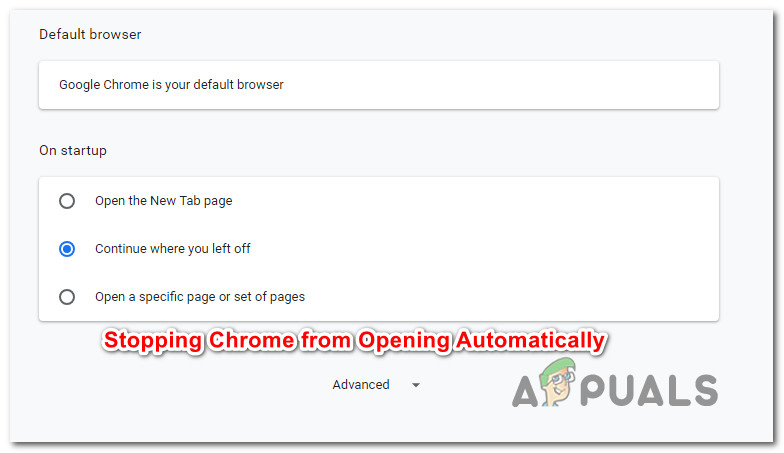
What is causing Google Chrome to open Automatically?
We investigated this particular issue by looking at various user reports and the repair strategies that most affected users have deployed in order to prevent Google Chrome from opening at every system startup.
Based on what we gathered, there are several different reasons why this issue will occur on Windows 10 with Google Chrome:
- Chrome is allowed to run at every startup – The main reason why Chrome will run at every startup is that it’s allowed to by the Windows Startup manager. If your Chrome build is old enough, you will be able to prevent the browser from opening at every startup by disabling its startup key.
- Chrome is configured to retrieve tabs – By default, Google Chrome is configured to re-open all your closed tabs every time you start the browser. Fortunately, you can change this behavior quite easily by modifying a certain setting.
- Chrome is configured to run background apps – In case your browser is allowed to run background apps, you might notice that some browser related processes are starting automatically along with every system startup. In this case, you can resolve the issue by accessing the Settings menu and preventing chrome from running background apps.
- StartupApproved items are forcing Chrome to open – If you’re the victim of a browser hijacker or you’ve installed some shady PuPs (potentially unwanted programs) by mistake, chances are you have some startup approved items that are forcing Chrome to open at every startup. You can fix this by using Registry Editor to clear out the unknown Run keys.
- Fast tab/windows close is enabled in Chrome – There’s one certain experimental feature in Chrome that is known to cause this particular issue. If you have fast/tab window close enabled from the Experimental Features window, you’ll need to disable it if you want to prevent Chrome from opening at every System startup.
- Chrome has been hijacked by malware – You might also be encountering this issue if you’re dealing with malware. Certain browser hijackers are known to force Chrome to open periodically in an attempt to direct the user to certain malicious websites.
If you’re currently struggling to resolve this particular issue and prevent Google Chrome from opening automatically at every startup, this article will provide you with several troubleshooting steps.
Down below, you’ll find a collection of methods that other users struggling with the same issue have used to get the issue resolved. For the best results, please follow the methods in the order that they are presented in.
Note: All the methods below can be replicated on Chromium and Canary browsers.
Method 1: Disabling Chrome from the Startup tab
If you’re just starting to look for ways to prevent Chrome from opening at every system startup, this should be your first stop. You should begin your quest by ensuring that Windows is not capable of stopping the process by itself. The startup tab is a menu that works wonders in those situations where you want to prevent a program from using up your system resources at every startup.
Here’s a quick guide on disabling Google Chrome from the Startup tab:
- Press Windows key + R to open up a Run dialog box. Then, type “msconfig” and press Enter to open up the System Configuration screen.
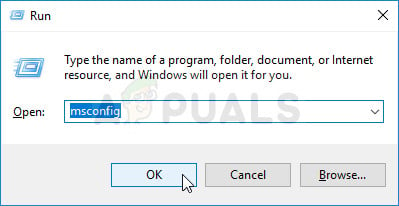
Running the MSCONFIG utility - Inside the System Configuration window, select the Startup tab and click on Open Task Manager.
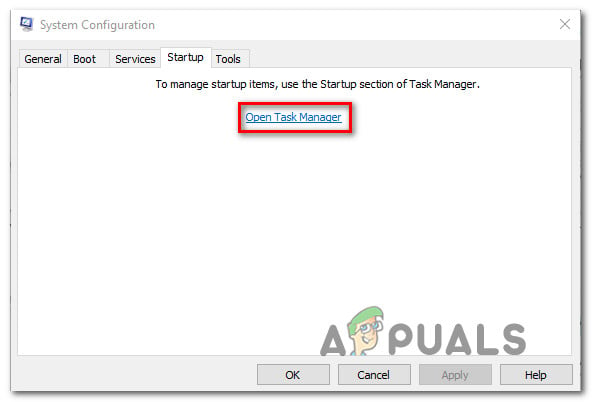
Opening the Task Manager via System Configuration - If you’re not taken directly to the Startup tab, click on it yourself. Then, scroll down to the list of application and right-click on Google Chrome. Then, click on Disable to prevent the Google Chrome process from being launched at the next system startup.

Disabling the startup process of Google Chrome If you’ve already tried this method without success or Google Chrome is not present inside the list of startup items, move down to the next method below.
Method 2: Preventing Chrome to Pick up where you left off
If you’re bothered by the fact that Chrome is automatically opening all of your last opened pages every time you start the browser, there’s a quick solution for that. Keep in mind that Chrome is configured by default to store and automatically retrieve the tabs that were left opened when you last closed the browser.
Fortunately, it’s quite easy to change this default behavior. Here’s what you need to do:
- Open Google Chrome and click the action button in the top-right corner of the screen (action button).
- From the newly appeared menu, click on Settings from the list.
- Inside the Settings menu, scroll down to the On Startup tab.
- Once you get there, change the toggle from Continue where you left off to Open the New Tab page.
- There’s no need to save the configuration. You simply need to close Google Chrome and the setting will be saved.
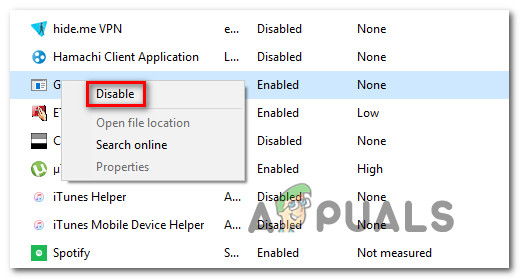
If this method was not applicable to your scenario, move down to the next method below.
Method 3: Preventing Chrome from running background apps
If you’re not actually seeing Google tabs popping up automatically but you know that a Chrome background process is running because you see that your system resources are kept busy, you can resolve the issue very easily by preventing the browser from running background apps when it’s closed.
This will not affect any browser functionality and you’ll end up freeing some system resources that can be used elsewhere. Here’s what you need to do:
- Open Google Chrome and click the action button (menu button) in the top-right corner of the screen.
- From the newly appeared menu, click on Settings.
- Inside the settings menu, scroll down to the bottom of the screen and click on the Advanced menu to make the hidden options visible.
- Scroll down to the System tab and make sure that the toggle associated with Continue running background apps when Google Chrome is closed is unchecked.
- Restart your computer and see if Google Chrome is still autostarting.

If you’re still encountering the same error message, move down to the next method below.
Method 4: Preventing Google Chrome from opening via Registry Editor
As it turns out, in most cases, the reason why Google Chrome insists on autostarting even when instructed to do otherwise, there’s a high chance that this is caused by one or several Startup Approved items from Google Chrome AutoLaunch.
Chances are your Google Chrome AutoLaunch folder contains some websites enforced by some PUPs (Potentially Unwanted Programs) that try to redirect to certain websites.
If this scenario is applicable, here’s what you need to do:
- Press Windows key + R to open up a Run dialog box. Then, type “regedit” and press Enter to open up Registry Editor. When prompted by the UAC (User Account Control), click Yes to grant administrative privileges.

Running the Registry Editor - Once you get inside Registry Editor, use the left-hand pane to navigate to the following location:
Computer\HKEY_CURRENT_USER\Software\Microsoft\Windows\CurrentVersion\Explorer\StartupApproved\Run
Note: You can either do this manually or you can simply paste the location inside the navigation bar and press Enter.
- With the Run key selected, move over to the right-hand pane and check any items that you don’t recognize.
- Right-click > Delete every item that seems suspicious and doesn’t seem to belong to any program that you installed.
- Once you’re than with that registry key, navigate to the following location using the left-hand panel or the navigation bar:
Computer\HKEY_CURRENT_USER\Software\Microsoft\Windows\CurrentVersion\Run
- Once you get to the second Run key, move over to the right-hand key and delete all values that you don’t recognize.
- Close Registry Editor, restart your computer and see if Google Chrome stops opening automatically at every startup.
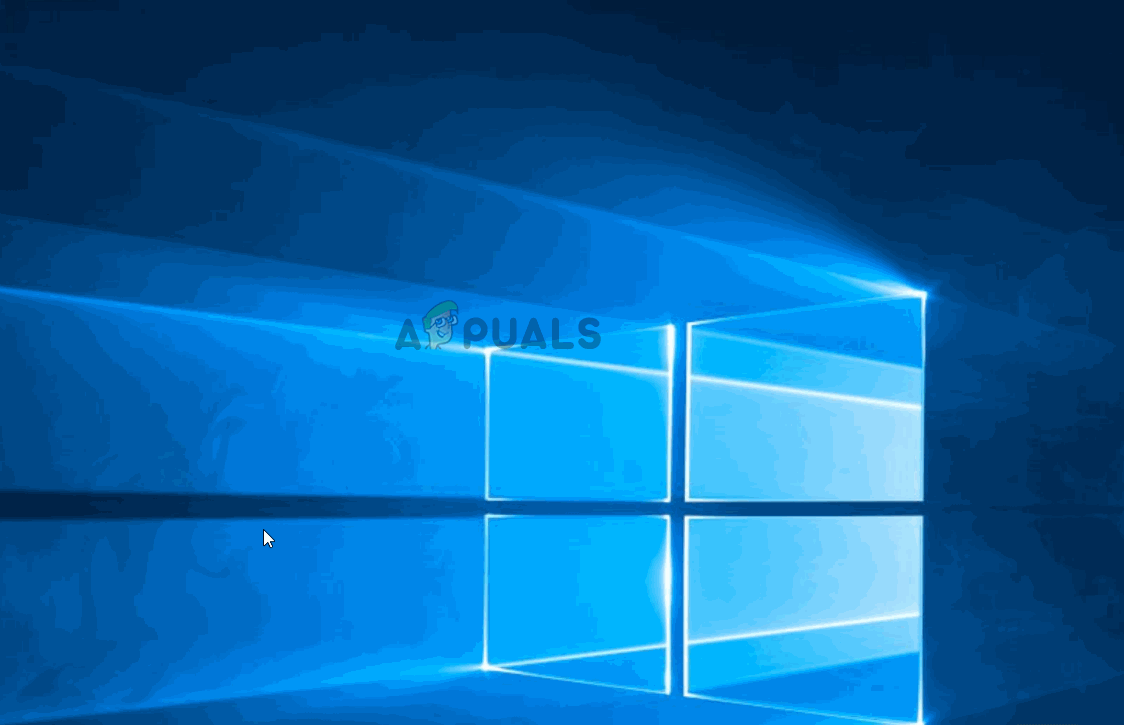
If you’re still encountering the same issue, move down to the next method below.
Method 5: Disabling Fast tab/window close in Chrome
As it turns out, automatic Chrome startup can also be caused by an experimental feature called Fast tab/window close. This thing can only be enabled or disabled from Chrome’s Experimental Features menu. This menu is hidden by default, couldn’t have enabled this by accident unless you found your way into the Flags menu.
Note: This method is no longer applicable if you’re using the latest Chrome build. The Fast tab/window close was since removed from Chrome’s Experimental Features menu.
If you think this scenario might be applicable and Fast tab/windows close might be enabled inside the Experimental features, here’s a quick guide on disabling this option:
- Open Google Chrome, type “chrome://flags” inside the navigation bar and press Enter to open the hidden menu.
- If you’re prompted by the confirmation window, click Yes to access the experimental features.

Typing in “Chrome:flags” in the address bar. - Inside the experimental menu, use the search function to search for “Enable Fast tab/windows close” or ‘#enable-fast-unload‘.
- Once you discover the feature, set the drop-down menu associated with it to Disabled.

- Restart your computer and see if Google Chrome is still opening by itself.
If you’re still having the same issue, move down to the next method below.
Method 6: Creating a task killer for Chrome
If you’ve come this far and Google Chrome is still stubborn enough to launch at every system startup, you can ensure that Chrome is killed every time it wants to open by creating a .bat file that automatically kills chrome.exe and place it inside the Startup folder.
Here’s a quick guide on how to do this:
- Press Windows key + R to open up a Run dialog box. Then, type “notepad” and press Enter to open up the Notepad app.
- Inside the notepad app, paste the following line of code:
Taskkill /IM chrome.exe /F
- Once the code is in place, go to File > Save as and name the file whatever you want. You can leave the Save as type to Text Documents, but the important part here is to ensure that you change the extension from .txt to .bat.
- Click the Save button to save the .bat file and close the Notepad application.
- Press Windows key + R to open up another Run dialog box. This time, type “shell:startup” and press Enter to open up the Startup folder.
- Inside the startup folder, simply paste the .bat file that you previously created. This will ensure that the task we previously created will be run at every system startup, which ends up killing the Chrome process before it has the chance of opening the main application.

Method 7: Eliminating the possibility of a browser hijacker
As some users have reported, this particular issue can also occur if your browser is hijacked by a malware that is trying to direct you to certain websites. Often times, browser hijackers will add an AutoRun key that will force the infected browser to open at every system startup.
If this scenario is applicable, you can resolve the issue by uninstalling your current Chrome browser, performing a malware scan and reinstalling a clean version of Chrome. Here’s how to do this:
- Press Windows key + R to open up a Run dialog box. Then, type “appwiz.cpl” and press Enter to open up Programs and Features.

Type appwiz.cpl and Press Enter to Open Installed Programs List - Inside the Programs and Features window, scroll down through the list of applications and locate Google Chrome. Once you see it, right-click on it and choose Uninstall.

Uninstalling Chrome - Once Chrome has been uninstalled, restart your computer.
- Once the next startup is complete, make use this guide (here) to scan and remove any browser hijackers that might have infected your computer.
- When the security scan is complete, restart your computer again.
- At the next startup, visit this link (here) to download & install the latest Chrome version.

Downloading Google Chrome
After following the steps above, you should have achieved a clean environment for Google Chrome. If the issue was previously caused by a browser hijacker, the issue should now be solved.





